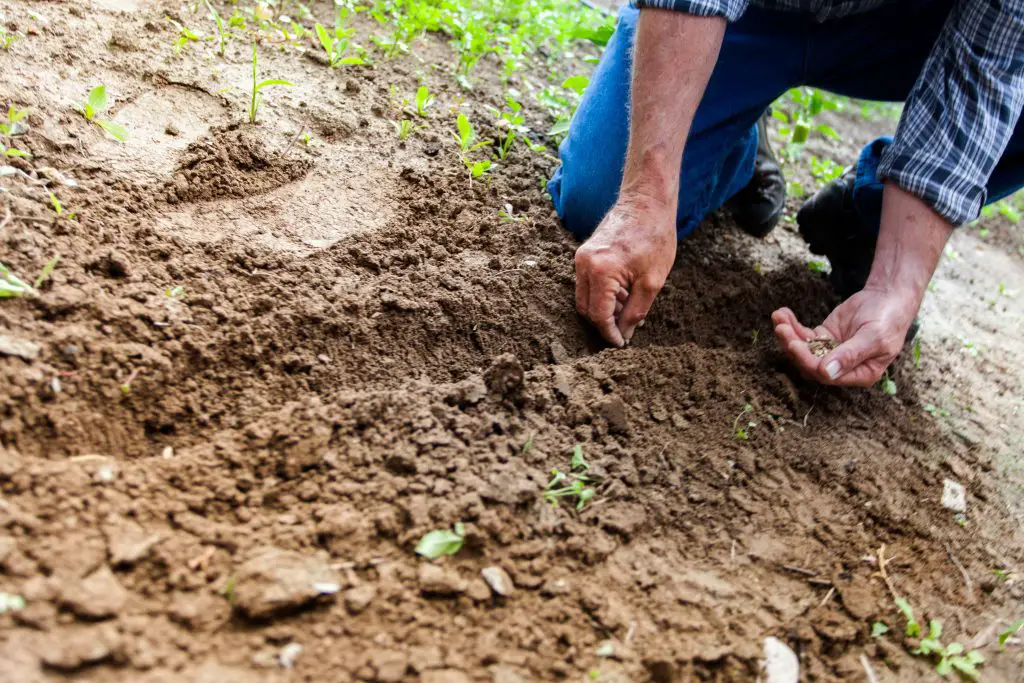Gardening is a passion shared by many, especially children and elders, but the method can vary. Raised garden beds and classic in-ground gardening are two popular choices. Each has its benefits and drawbacks. This article will explore the differences, helping you decide which suits your green thumb best.
Contents
- 1 Understanding Raised Garden Beds
- 2 Exploring In-Ground Gardening
- 3 Comparing Raised Garden Beds vs. In-Ground Gardening
- 4 Cost and Sustainability
- 5 FAQ on Raised Garden Beds vs. In-Ground Gardening
- 5.1 Which is better for beginners, raised garden beds or in-ground gardening?
- 5.2 Can raised garden beds be more sustainable than in-ground gardens?
- 5.3 How often do raised garden beds need soil replenishment?
- 5.4 Are in-ground gardens better for water conservation?
- 5.5 Do raised beds or in-ground gardens require more maintenance?
- 5.6 Is it more expensive to start a raised garden bed or an in-ground garden?
- 5.7 Can I use the same soil in my raised garden bed that I have in my yard?
- 6 Conclusion
Understanding Raised Garden Beds
Raised garden beds are becoming increasingly popular among gardening enthusiasts. But what exactly are they? Let’s delve into their structure, benefits, and drawbacks.
What are Raised Garden Beds
Raised garden beds are contained plots of soil elevated above ground level. They’re typically framed with wood, stone, or metal. These structures vary in size but are usually at a height that makes them easy to reach without bending over.
Benefits of Raised Garden Beds
Raised beds offer several advantages. Firstly, they provide excellent soil drainage. This is crucial for healthy plant roots. Secondly, they can lead to better harvests. The soil in raised beds warms up faster in spring. This gives you a head start on the growing season. Additionally, you can fill them with your chosen soil blend. This ensures optimal conditions for your plants.
Raised beds also make gardening more accessible. They’re ideal for those with limited mobility. Their height means less bending and kneeling. Finally, they help in keeping your garden tidy. The clear separation between the garden and the path reduces weed spread.
Drawbacks to Consider
However, raised beds aren’t without their challenges. They require an initial investment. Building or buying the frames and filling them with soil can add up. Also, they can dry out faster than in-ground beds. This means they might need more frequent watering during hot weather.
In some climates, the quick drainage can also be a downside. In areas with low rainfall, maintaining moisture levels can be a challenge. Lastly, depending on the materials used, raised beds can deteriorate over time. Wooden frames, for instance, may rot and need replacement.
Raised garden beds offer a modern twist on traditional gardening. They can yield a bountiful harvest and make gardening more accessible. However, they also come with certain drawbacks. As we continue exploring, we’ll compare them with classic in-ground gardening. This will help you make an informed decision for your gardening journey.
Exploring In-Ground Gardening
In-ground gardening is the traditional method many of us envision when considering gardening. It involves planting directly into the ground, utilizing the natural landscape. Let’s explore what this classic approach entails.
What is In-Ground Gardening?
In-ground gardening means working with the existing soil in your yard. Gardeners till the soil, add amendments and plant directly in the earth. This method has been used for centuries, providing a natural setting for growing plants.
Advantages of Traditional Gardening
One major advantage is the initial cost. In-ground gardening typically requires less financial investment upfront compared to raised beds. There’s no need for building materials, and soil amendments can be more targeted.
Another benefit is the connection to the earth. Some gardeners prefer the feel of soil under their fingers. This method allows for a larger planting area as well, ideal for expansive gardens.
In terms of environmental factors, in-ground gardens maintain moisture better. They’re less prone to drying out. This can be especially beneficial in hotter climates.
Potential Challenges
Despite its advantages, in-ground gardening has its challenges. Soil quality can be a significant issue. If your natural soil is poor, it may require extensive amendments. Additionally, in-ground gardens can be harder on the back and knees. Bending and kneeling are often necessary.
Weed management can also be more demanding. Without the clear boundaries of raised beds, weeds can spread more easily. Pest control can be another challenge, as critters have easier access to ground-level plants.
Overall, in-ground gardening is a timeless method with its benefits and challenges. It appeals to those who enjoy a natural approach and don’t mind extra work. Understanding in-ground gardening and raised garden beds can help you choose the best method for your garden.
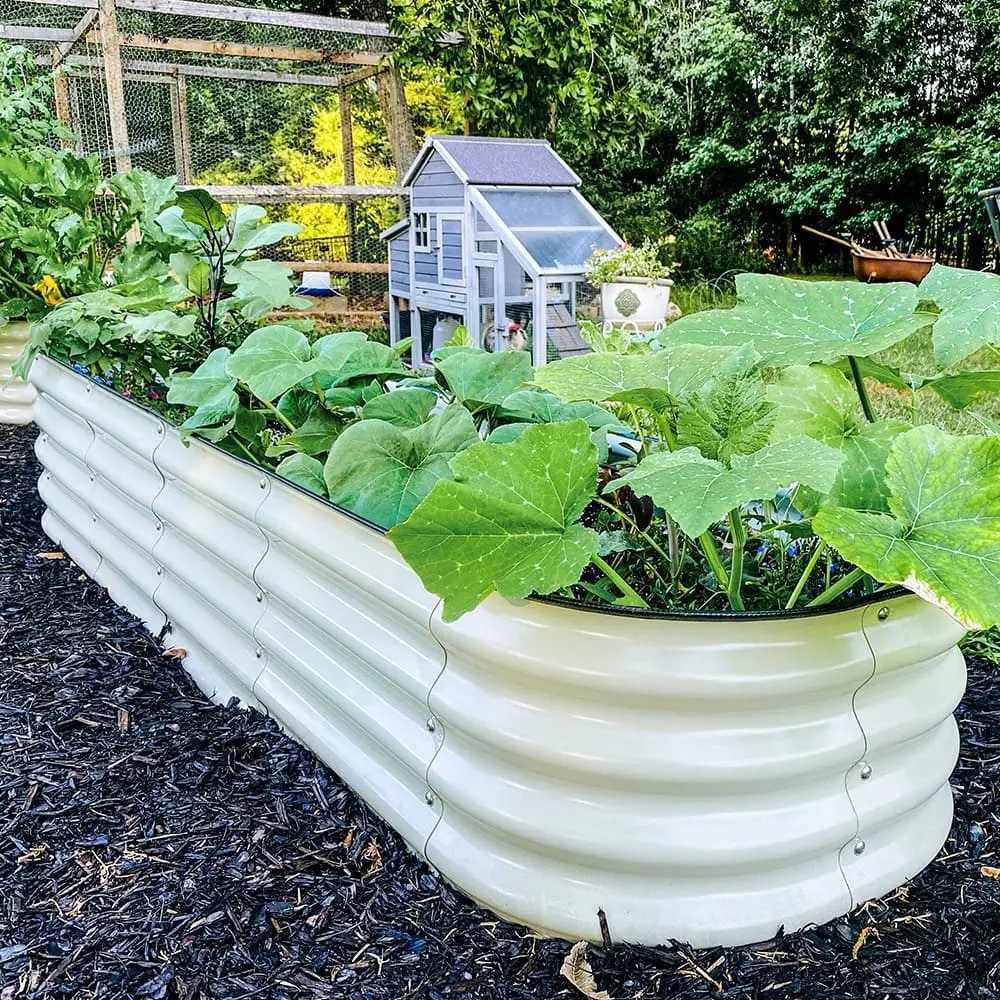
Comparing Raised Garden Beds vs. In-Ground Gardening
Choosing between raised garden beds and in-ground gardening can be tough. Both have unique features that appeal to different gardeners. Let’s compare them across various factors to help you make an informed decision.
Soil Quality and Control
The soil is the foundation of any garden, and its quality can significantly affect your plants’ health and yield. Let’s explore how raised garden beds and in-ground gardening measure soil quality and control.
Raised Garden Beds: Tailored Soil Environment
Raised garden beds offer unparalleled control over soil quality. You can fill them with a custom blend of soil perfectly suited to the plants you wish to grow. This means you can create the ideal balance of nutrients, pH levels, and texture from the start.
Moreover, the soil in raised beds doesn’t get compacted because there’s no need to walk on it. This allows for better aeration, crucial for root health and nutrient absorption.
In-Ground Gardening: Working with Nature
In-ground gardening involves working with the existing soil. This can be both an advantage and a challenge. If you’re blessed with rich, loamy soil, in-ground gardening can be highly productive. However, if the native soil is poor, it may require significant amendments such as compost, manure, or other organic materials to improve fertility.
Another factor to consider is soil compaction. Regular tilling and foot traffic can compact the soil in traditional gardens, negatively affecting plant growth.
The Verdict
Regarding soil quality and control, raised garden beds generally come out ahead. They provide the opportunity to create an optimal growing environment immediately. However, in-ground gardens can be just as productive if the existing soil is good or has been properly amended.
Understanding the soil needs of your garden is crucial. It will guide you in choosing the best method for your plants to thrive.
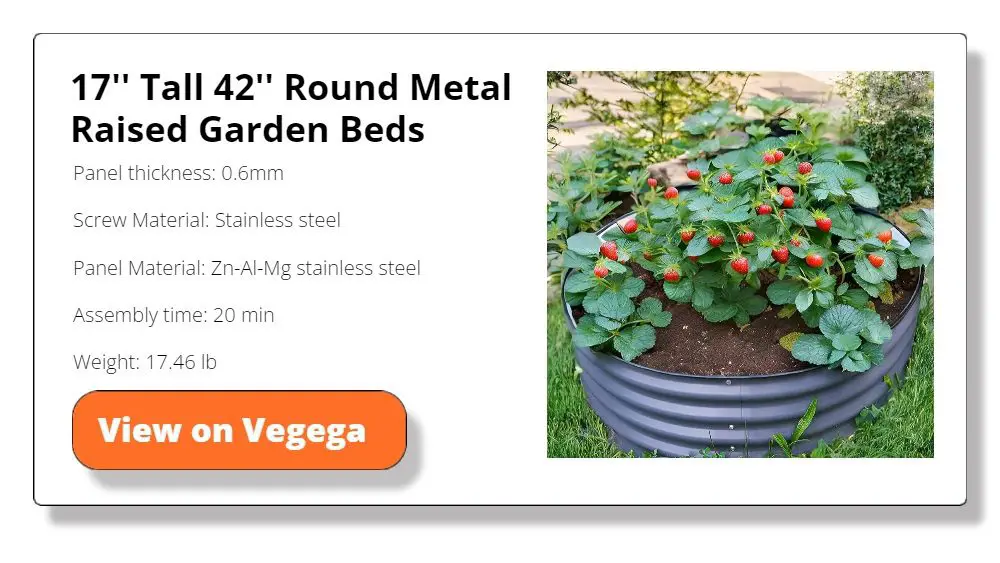
Watering and Drainage
Water is life for any garden, but too much or too little can spell disaster. Let’s examine how raised garden beds and in-ground gardening handle these crucial aspects.
Raised Garden Beds: Excellent Drainage
Raised garden beds typically excel in drainage. Elevated above the ground and filled with loose, aerated soil, water flows through them easily, preventing waterlogging and root rot. However, this efficient drainage means that during dry periods, they may require more frequent watering. For gardeners in regions with less rainfall or those who travel often, this could be a drawback.
In-Ground Gardening: Natural Retention
In contrast, in-ground gardens tend to retain moisture longer. This can be a double-edged sword. On the one hand, less frequent watering saves time and resources. On the other hand, heavy rains can lead to waterlogging, especially in clay-heavy soils. Proper grading and soil amendment can improve drainage, but these are additional efforts that the gardener must undertake.
The Verdict
In the battle of watering and drainage, each method has its merits. Raised beds offer excellent drainage but may require more frequent watering. In-ground gardens, meanwhile, can retain moisture for longer but might struggle with excess water after heavy rains. Your local climate and soil type will play significant roles in determining which method suits you best.
Pest and Weed Management
Gardens are ecosystems that attract various visitors, not all of which are welcome. Managing pests and weeds is crucial for a healthy, productive garden. Here’s how raised garden beds and in-ground gardening stack in this area.
Raised Garden Beds: A Step Above
Raised garden beds have a natural advantage in pest and weed management. Their elevation makes it more difficult for many pests, such as slugs and rabbits, to reach your plants. Additionally, since you’re starting with fresh soil, there’s typically a lower initial weed seed bank.
Of course, they’re not impervious. Persistent pests can still find their way in, and airborne weed seeds can settle in the soil. Regular maintenance and vigilance remain important.
In-Ground Gardening: The Ground-Level Battle
In-ground gardens face a tougher challenge. Weeds can easily encroach from surrounding areas, and pests have easy access to plants. Barrier methods, such as mulching and row covers, can help, but these gardens often require more labor to keep pests and weeds at bay.
Moreover, soil-dwelling pests can be a bigger issue for in-ground gardens. These include grubs, nematodes, and certain types of beetles.
The Verdict
Regarding pest and weed management, raised garden beds generally offer an easier time, thanks to their design and fresh soil. However, neither method is immune to these issues. Whichever gardening method you choose, a proactive approach to pest and weed management will be essential for a thriving garden.
Productivity and Crop Health
The ultimate goal of any gardener is a bountiful harvest of healthy plants. Let’s see how raised garden beds and in-ground gardening promote productivity and crop health.
Raised Garden Beds: Optimized Conditions
Raised beds are often associated with higher productivity. Their soil warms up faster in the spring, allowing for an earlier start to the planting season. Customizing the soil for specific plant needs can also lead to healthier, more robust crops.
Moreover, the clear demarcation of raised beds can make it easier to manage plants and notice any issues early on. This can lead to quicker interventions and healthier plants.
In-Ground Gardening: The Natural Approach
In-ground gardens benefit from a deep, established ecosystem. Roots can grow deeply into the earth, tapping into natural resources. If the soil is rich and well-maintained, in-ground gardens can be highly productive and yield healthy crops.
On the other hand, crop health can be more variable in in-ground gardens, heavily influenced by soil conditions and climate.
The Verdict
Both raised garden beds and in-ground gardening can be highly productive and support healthy crops. Raised beds might have the edge regarding control and ease of management, potentially leading to higher yields per square foot. In-ground gardens, however, can also be prolific, especially if the natural conditions are favorable. Your gardening goals, resources, and environment will guide you in choosing the method that will be most productive for you.
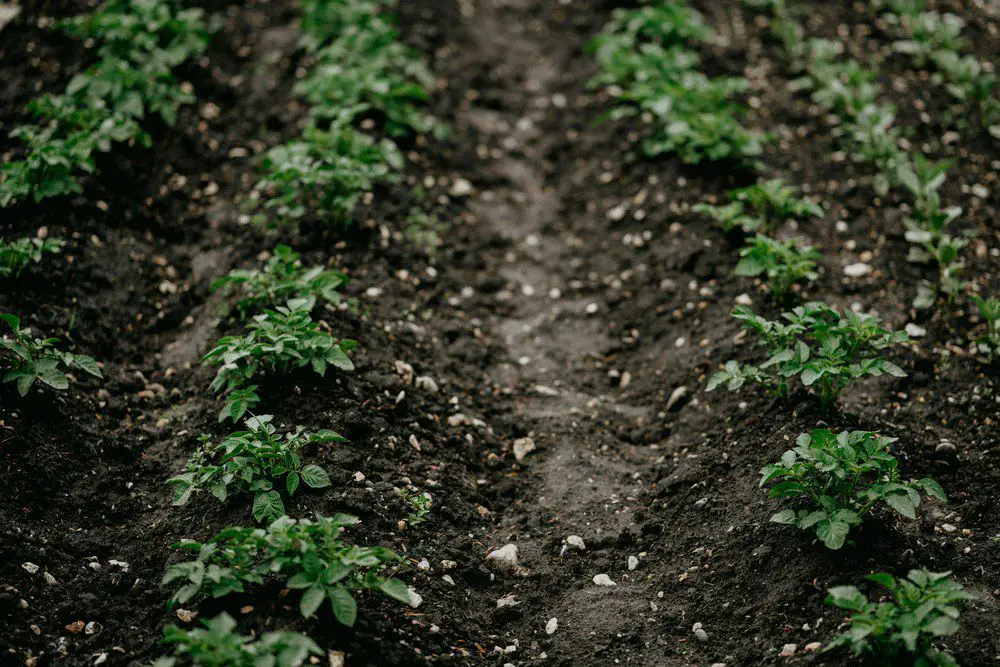
Long-Term Sustainability
Sustainability is a key factor in gardening, affecting the environment and the gardener’s commitment. Here’s how raised garden beds and in-ground gardening measure in terms of long-term sustainability.
Raised Garden Beds: Sustainable but with Caveats
Raised beds can be sustainable, especially from durable, eco-friendly materials. They can reduce soil erosion and make efficient use of space. However, the need for imported soil and materials can have a larger initial environmental footprint. Over time, wooden frames may deteriorate and need replacement, adding to long-term costs and resource use.
Water usage is another consideration. Raised beds may require more frequent watering, which can be a concern in areas with water shortages.
In-Ground Gardening: Naturally Sustainable
In-ground gardening can be inherently sustainable, particularly if you’re enhancing the existing ecosystem without introducing a lot of external inputs. It uses natural resources and can be maintained with minimal additional materials.
However, tilling and soil compaction can disrupt soil life and contribute to erosion. Sustainable in-ground gardening practices, like no-till and organic methods, can mitigate these issues.
The Verdict
Both methods can be sustainable, but they have different considerations. Raised beds offer control and efficient space usage but may have higher initial and long-term resource requirements. In-ground gardening can be more naturally sustainable if managed responsibly. The key to long-term sustainability in either method lies in mindful practices, responsible resource use, and a commitment to environmental stewardship.
Cost and Sustainability
When planning a garden, it’s important to consider both the financial investment and the environmental impact. In this section, we’ll discuss the cost and sustainability aspects of raised garden beds and in-ground gardening. Our breakdown of the costs will help you make a choice that’s both economically and ecologically sound.
Initial Setup Costs
When starting a garden, the initial setup costs can influence your choice of method. Both raised garden beds and in-ground gardening come with different financial requirements. Let’s delve into the specifics.
Raised Garden Beds: Material and Soil Costs
Raised garden beds require an initial investment in materials. You’ll need to purchase or gather wood, metal, or stone for the frames. The choice of material can significantly affect the cost. For instance, naturally rot-resistant cedar is more expensive than pine but lasts longer.
Additionally, you’ll need to fill the beds with soil. Depending on the size of your raised beds and the quality of soil you choose, this can be a significant expense. You might also opt for landscape fabric or hardware cloth for lining the bottom of the beds, which adds to the cost.
Fortunately, there are premade ones that do not cost an arm and a leg, like the Vegega Raised Garden Bed Kit. This metallic planter comes in different sizes and colors. The Q195 galvanized metal sheet is strong against rust and is likely to last a long time.
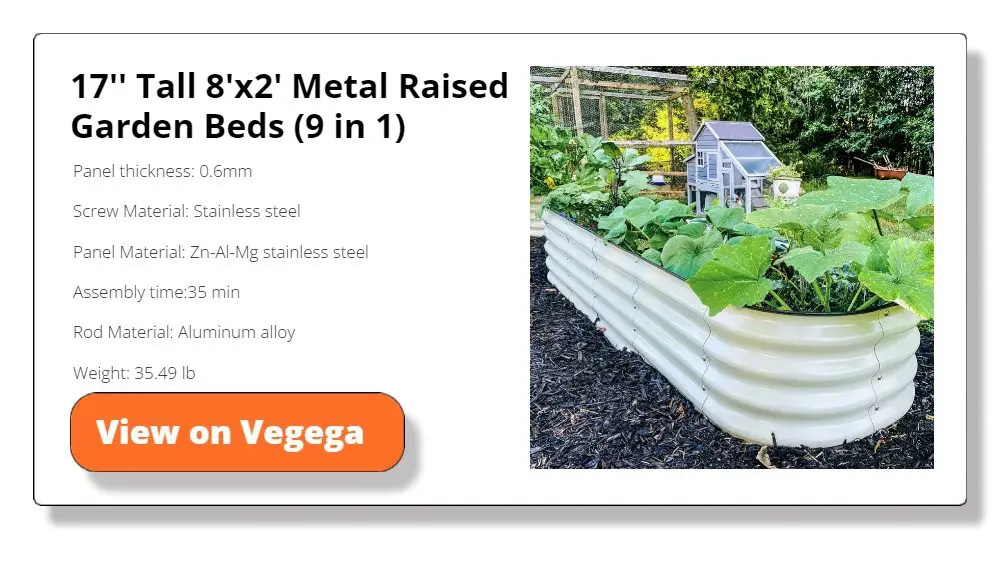
In-Ground Gardening: Lower Material Costs
In-ground gardening generally has lower material costs. The main expense is soil amendments, such as compost, manure, or fertilizers, to enhance the existing soil. You might also need tools for tilling and preparing the soil, but these are typically a one-time purchase.
If you opt for organic amendments and use tools you already have, the initial setup costs for in-ground gardening can be minimal.
Hidden Costs and Considerations
There are hidden costs in both methods. Raised beds might need replacement after several years, especially if made from less durable materials. In-ground gardens might require more labor, which can be a hidden “cost” if you hire help.
Watering systems are another consideration. Raised beds may benefit from drip irrigation to manage their higher watering needs, which can be an additional cost. In-ground gardens might need less sophisticated watering solutions but could benefit from mulching materials to retain moisture.
Regarding initial setup costs, in-ground gardening generally comes out ahead, especially if you’re working with tools and materials you already have. Raised garden beds, while offering many benefits, require a more significant upfront financial investment. Your budget and long-term gardening goals will be crucial in deciding which method to choose.
Ongoing Maintenance Expenses
After the initial setup, ongoing maintenance costs become the new focus. These costs can vary greatly depending on the gardening method chosen. Let’s look at what you can expect with each option.
Raised Garden Beds: Soil and Structure Maintenance
Raised garden beds require periodic replenishment of soil nutrients, usually through top-dressing with compost or other organic matter. Over time, the soil level may drop as organic material decomposes, necessitating additional soil or compost.
Additionally, the structure itself may need maintenance. Wood frames may rot or warp and need repair or replacement. Metal or stone beds typically last longer but may have higher upfront costs.
In-Ground Gardening: Tilling and Amendments
In-ground gardens often involve lower maintenance costs over time. You’ll still need to replenish nutrients, but you might not need as much supplemental soil or compost.
Tilling can be a cost if you don’t own the equipment. However, many gardeners are shifting to no-till methods, which not only save on this cost but also benefit the soil’s health.
Watering Systems
Both types of gardens may require investment in water systems, especially in drier climates. Drip irrigation systems, while an initial expense, can save water and reduce ongoing watering costs in the long run.
Pest and Disease Control
Pest and disease control can be an unpredictable cost in any garden. Raised beds might have fewer issues with ground pests but aren’t immune. The costs of organic or chemical controls can increase over time, regardless of the gardening method.
Ongoing maintenance costs can fluctuate with both gardening methods. Raised beds require more structural maintenance, while in-ground gardens may need more soil amendments.
Efficient watering systems and integrated pest management can help keep ongoing costs manageable in either scenario. Your approach to these ongoing tasks will largely determine the long-term cost of maintaining your garden.
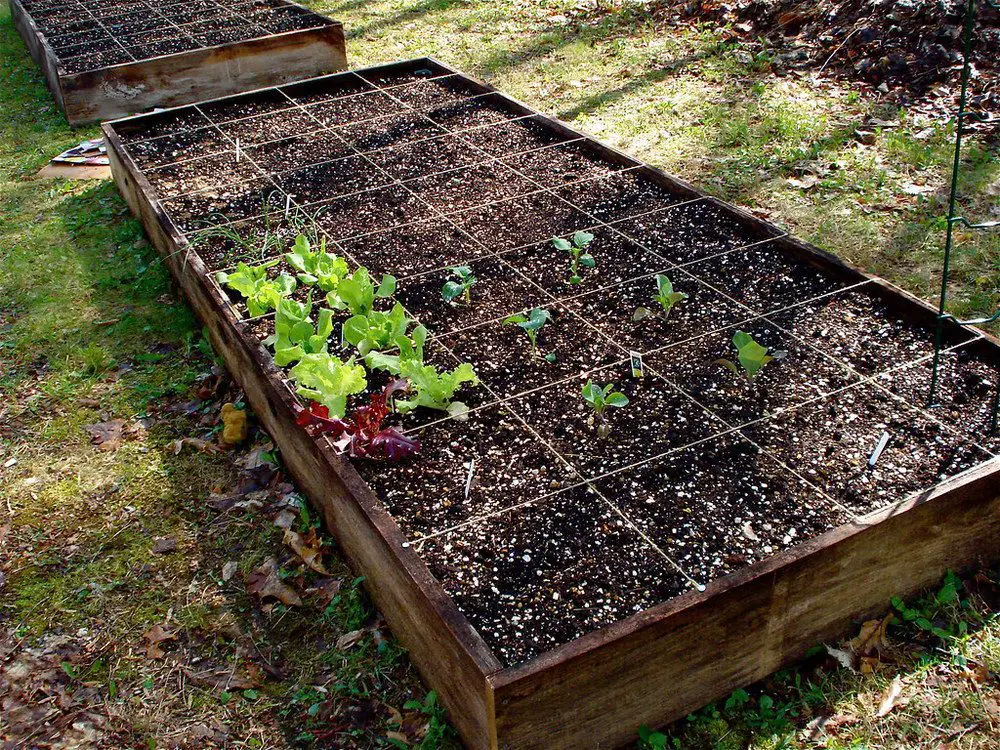
Environmental Footprint
The environmental footprint of your garden is an essential consideration, especially if sustainability is a priority. Here’s how raised garden beds and in-ground gardening compare regarding ecological impact.
Raised Garden Beds: Material Use and Water Consumption
The materials used to construct raised garden beds can have a significant environmental footprint. If you’re using wood, consider its source—is it sustainably harvested? Durable materials like metal or stone have a longer lifespan but have a higher initial ecological cost.
Water consumption is another factor. Raised beds dry out faster and typically require more frequent watering. In areas where water is scarce, this could be a concern.
However, raised beds offer benefits like reduced soil erosion and more efficient use of space, which can positively impact the environment.
In-Ground Gardening: Soil Health and Resource Use
In-ground gardening can enhance the health of the soil if managed sustainably. Crop rotation, cover cropping, and organic amendments can improve soil structure and biodiversity, creating a more sustainable ecosystem.
There’s also generally less need for imported materials in in-ground gardening, which reduces the carbon footprint associated with transportation.
However, traditional tilling practices can contribute to soil erosion and the release of carbon into the atmosphere. No-till methods and careful water management can mitigate these issues.
Both gardening methods have environmental trade-offs. Raised beds might require more materials and water, but they can also efficiently use space and reduce soil erosion. In-ground gardens can be more sustainable if managed responsibly but can have negative impacts if not.
Ultimately, the environmental footprint of your garden will depend on your management practices. Choosing sustainable materials, conserving water, and enhancing soil health are key strategies, regardless of the gardening method you select.
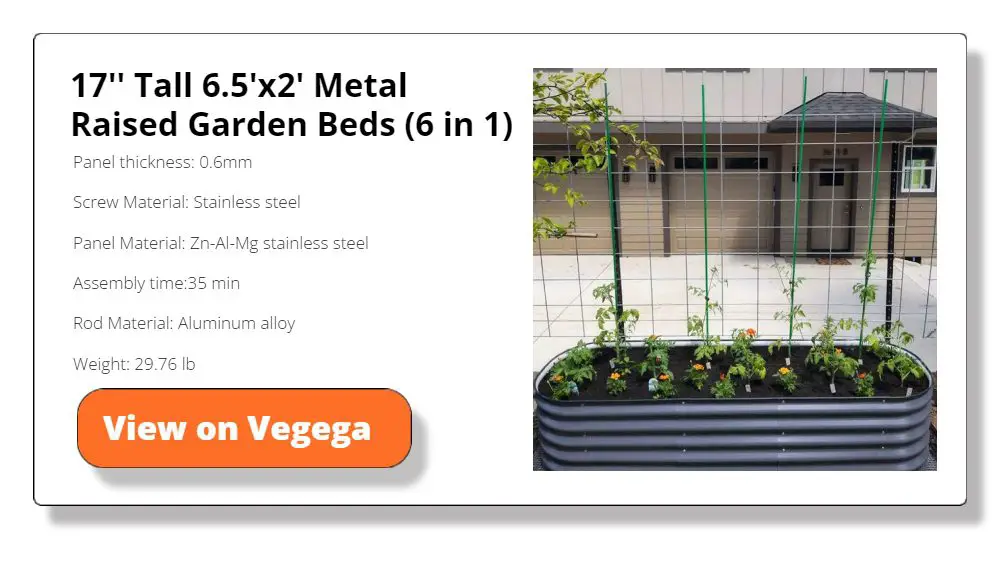
Materials and Resources
The materials and resources needed for gardening are significant in the initial setup and ongoing sustainability. Let’s explore the requirements for raised garden beds and in-ground gardening.
Raised Garden Beds: Sourcing Materials
Constructing raised garden beds typically requires purchasing or sourcing materials like wood, metal, or stone for the frames. The choice of material not only affects durability but also the environmental impact. For example, repurposing old materials can be both cost-effective and eco-friendly.
The soil is another critical resource. You’ll need a significant volume to fill the beds, and sourcing high-quality, organic soil can be a considerable expense. Mulch, while beneficial for moisture retention and weed suppression, is an additional resource raised bed gardeners often need.
In-Ground Gardening: Working with What You Have
In-ground gardening primarily utilizes the existing soil, which can be amended with organic matter like compost or manure. These amendments enhance soil health, reducing the need for chemical fertilizers and pesticides.
Tools for tilling, weeding, and planting are the main resources needed. Many gardeners already have these tools or can borrow them, reducing the need for new purchases.
Sustainable Resource Use
In both gardening methods, sustainable resource use can significantly impact the environmental footprint. Compost made from kitchen scraps or locally sourced materials can reduce waste and transportation emissions.
Water is another vital resource. Efficient irrigation systems like drip lines or soaker hoses can conserve water and reduce the overall resource use in both types of gardens.
Raised garden beds often require more materials and resources initially, especially if starting from scratch. In-ground gardening can use what’s already available, potentially reducing the need for new materials.
However, both methods can be resource-intensive if not managed sustainably. Mindful choices in materials and resource use can help minimize the environmental impact and promote a more sustainable garden, regardless of the method chosen.

FAQ on Raised Garden Beds vs. In-Ground Gardening
Which is better for beginners, raised garden beds or in-ground gardening?
Both have advantages for beginners. Raised garden beds offer better control over soil quality and can be easier on the back. In-ground gardening requires less initial investment. The best choice depends on your specific needs and resources.
Can raised garden beds be more sustainable than in-ground gardens?
Raised garden beds can be sustainable if made with eco-friendly materials and managed with water conservation. However, in-ground gardens typically have a lower initial environmental footprint.
How often do raised garden beds need soil replenishment?
It varies, but generally, you should add compost or other organic matter to replenish nutrients annually. Soil levels should be checked and topped up as needed, usually every 1-2 years.
Are in-ground gardens better for water conservation?
Not necessarily. While raised beds may dry out faster, efficient watering systems like drip irrigation can help conserve water. In-ground gardens can also benefit from such systems, along with mulching to retain moisture.
Do raised beds or in-ground gardens require more maintenance?
Raised beds may require more structural maintenance over time, whereas in-ground gardens may need more regular soil amendment and weed control. Both require ongoing maintenance for optimal productivity.
Is it more expensive to start a raised garden bed or an in-ground garden?
Raised garden beds usually have higher initial costs due to materials for the bed structure and soil. In-ground gardens typically require less investment upfront, mainly for soil amendments and basic tools.
Can I use the same soil in my raised garden bed that I have in my yard?
You can, but it may not provide the optimal conditions. Raised garden beds often benefit from a special mix of soil, compost, and other amendments to ensure good drainage and nutrient content.
Conclusion
Choosing between raised garden beds and in-ground gardening depends on your needs, resources, and sustainability goals. Raised beds offer control and ease but have higher initial costs and maintenance. In-ground gardening is more cost-effective and can be equally sustainable with mindful practices.
Both methods have their environmental footprint, which can be managed with sustainable choices in materials, water use, and soil health. Whichever method you choose, the key to success lies in understanding the unique requirements and committing to the maintenance and care needed to create a thriving garden.

